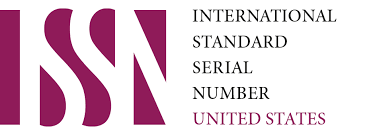Pipe corrosion recognition through image processing using fault detector robot
Keywords:
Corresion, Robotics, Detector, PipelinesAbstract
In industrial literature, damages that occurred due to various reasons on the material are called corrosion. Corrosion cause fatigue and failure of systems and other risks such as financial losses for replacing the system, leakage and pollution of contacted products. In accessible surfaces corrosion detection is done easily, but in cases such as tanks, pipes and particularly long tubes, there is no access to the inside of the pipes so more complex systems are needed. In this research, a new approach is proposed to detect corrosions in industrial pipes. The proposed method is based on image processing algorithms hence it is a kind of non-destructive inspection method. The proposed method offers a new innovative processing algorithm to identify corrosion and also provides a proper lighting method. For this purpose, first the correct lighting system is performed , then obtained images from inspection would be preprocessed for detection phase. Preprocessing step includes color format changing, denoising and smoothing operations. Then corrosions are identified by edge detection algorithms and amount of it, is estimated by morphological operations.
References
Ahrary, A. (2008). Sewer Robotics. Service Robot Applications: 283 - 307.
Black, P. (1992). A review of pipeline leak detection technology. Pipeline systems, Springer: 287-298.
Choi, K.-Y. and S. Kim (2005). "Morphological analysis and classification of types of surface corrosion damage by digital image processing." Corrosion Science 47(1): 1-15.
Crouch, A. (1993). IN-LINE INSPECTION OF NATURAL GAS PIPELINES.
Dobie, G., R. Summan, et al. (2013). "Visual odometry and image mosaicing for NDE." NDT & E International 57: 17-25.
Dobie, G., R. Summan, et al. (2013). "Visual odometry and image mosaicing for NDE." NDT & E International 57: 17-25.
Jim Cordell, H. V. (2001). "An Introduction to Pipeline Pigging." The
Pigging Products & Services Association, 4th Edition.
Kirkham, R., P. D. Kearney, et al. (2000). "PIRAT—a system for quantitative sewer pipe assessment." The International Journal of Robotics Research 19(11): 1033-1053.
Kuntze, H., H. Haffner, et al. (1994). Development of a flexible utilisable robot for intelligent sensor-based sewer inspection. Proceedings of the 4th International Conference on Pipeline Construction.
Li, B. and H. Johan (2013). "3D model retrieval using hybrid features and class information." Multimedia Tools and Applications 62(3): 821-846.
Mashford, J., M. Rahilly, et al. (2010). "A morphological approach to pipe image interpretation based on segmentation by support vector machine." Automation in Construction 19(7): 875-883.
Mashford, J. S. (1995). A neural network image classification system for automatic inspection. Neural Networks, 1995. Proceedings., IEEE International Conference on, IEEE.
Moselhi, O. and T. Shehab-Eldeen (2000). "Classification of defects in sewer pipes using neural networks." Journal of infrastructure systems 6(3): 97-104.
Safizadeh, M. and T. Azizzadeh (2012). "Corrosion detection of internal pipeline using NDT optical inspection system." NDT & E International 52: 144-148.
Schmidt, J. (1993). "MAGNETIC FLUX LEAKAGE TECHNOLOGY FOR NATURAL GAS PIPELINES--AN OPERATOR'S VIEWPOINT." J. T. Schmidt, Paper(584).
Sinha, S. K. and F. Karray (2002). "Classification of underground pipe scanned images using feature extraction and neuro-fuzzy algorithm." Neural Networks, IEEE Transactions on 13(2): 393-401.
Downloads
Published
Issue
Section
License

This work is licensed under a Creative Commons Attribution-NonCommercial 4.0 International License.
User Rights
Under the Creative Commons Attribution-NonCommercial 4.0 International (CC-BY-NC), the author (s) and users are free to share (copy, distribute and transmit the contribution).
Rights of Authors
Authors retain the following rights:
1. Copyright and other proprietary rights relating to the article, such as patent rights,
2. the right to use the substance of the article in future works, including lectures and books,
3. the right to reproduce the article for own purposes, provided the copies are not offered for sale,
4. the right to self-archive the article.












